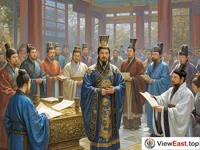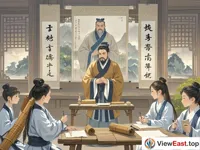






In the long river of ancient Chinese history, the Qin and Han periods were crucial for the development of Han Chinese culture, marking a comprehensive prosperity in politics, economy, culture, technology, and other aspects. During this era, Han Chinese culture not only set the tone for the ethos of the Chinese nation but also had a profound impact on future generations.
Political Unification and Centralization
The establishment of the Qin Dynasty marked the birth of the first unified multi-ethnic state in Chinese history. Emperor Qin Shi Huang implemented a centralized system of government, standardized measurements, script, and laws, laying the foundation for the unification of Han Chinese culture. The Han Dynasty inherited and developed the centralized system of the Qin Dynasty, forming a more refined bureaucratic system, providing a stable political environment for the prosperity of Han Chinese culture.
Economic Development and the Silk Road
During the Qin and Han periods, agriculture, handicrafts, and commerce in Han Chinese regions experienced significant growth. Particularly in the Han Dynasty, the implementation of equal-field system and tax reduction stimulated the prosperity of agricultural production. At the same time, the opening of the Silk Road increased trade between China and the Western Regions, not only driving economic prosperity but also promoting cultural exchange and integration.
Cultural Achievements and Intellectual Innovation
In the Qin and Han periods, Han Chinese culture achieved brilliant accomplishments in literature, art, philosophy, and other fields. The Han Dynasty's literary forms such as fu poetry and Yuefu showcased the rich connotations of Han Chinese culture. At the same time, Confucianism became the dominant official ideology, profoundly influencing the development of Han Chinese culture. Additionally, the rise of Taoism and Buddhism also enriched the religious culture of the Han Chinese.
Technological Inventions and Innovations
The Han Chinese also made significant achievements in the field of technology during the Qin and Han periods. The papermaking and compass, two of the Four Great Inventions, were developed and applied during this time. Moreover, the Han Dynasty made important progress in astronomy, medicine, mathematics, and other fields, laying the foundation for the technological development of later generations.
Conclusion
The prosperity of Han Chinese culture during the Qin and Han periods, with its political unification, economic prosperity, cultural richness, and technological innovation, demonstrated the splendid achievements of Han Chinese culture and had a profound impact on the ethos of the Chinese nation.